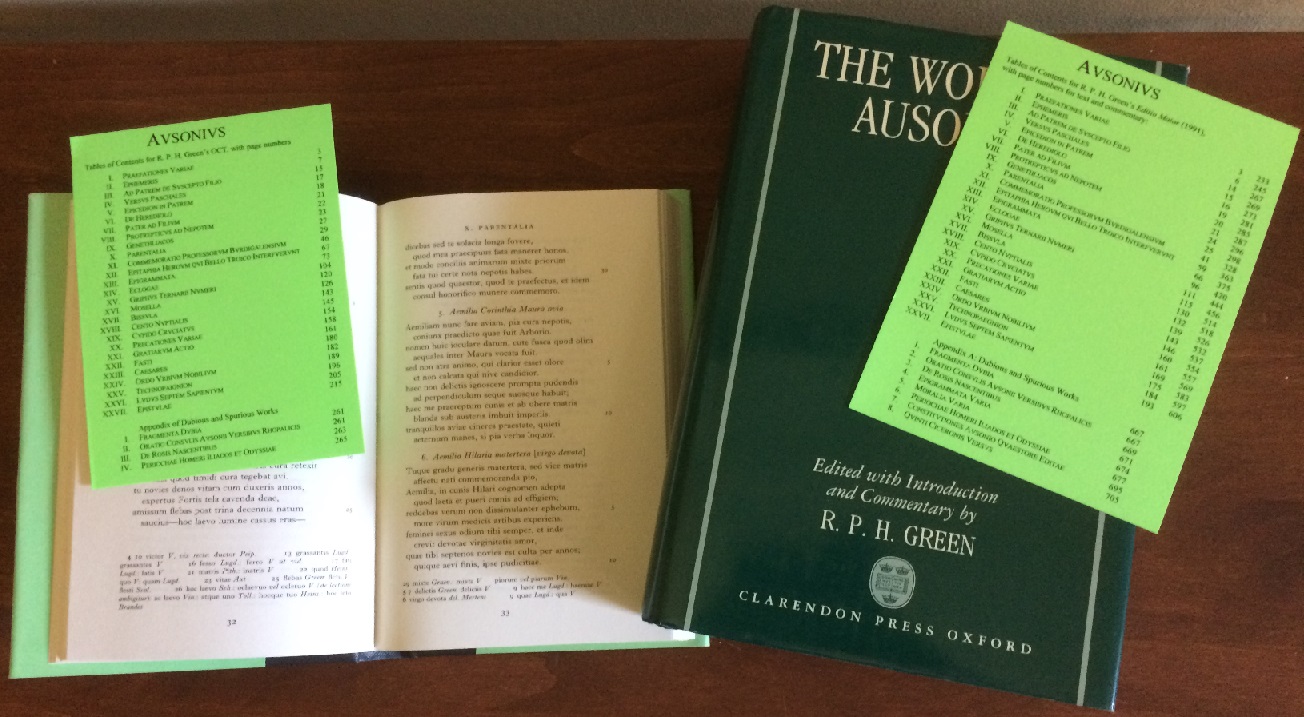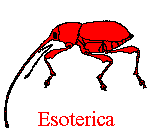Some Oxford Classical Texts really need a table of contents. Perhaps most of all Ausonius, whose works are numerous, of widely-varying length and interest, and numbered differently in just about every edition. I suspect that few Latinists have ever had the urge to sit down and read any of the editions through without skipping: surely we all pick out specific works to read based on recommendations and references. Riffling through the OCT to find the Parentalia or Epigrammata or Mosella doesn’t take long, but if you’re looking for Cupido Cruciatus, or Bissula, or Griphus Ternarii Numeri, or the Pseudo-Ausonian De Rosis Nascentibus, it can take a while, and these four short works are among the most interesting in the volume. There is a concordance of numerations in different editions (286ff.) but it doesn’t give the titles, so it only helps if you already know the number in another edition. The Index of proper names and related adjectives (299-316) does help, since the only ‘Bissula’ listed is in the collection Bissula (work XVII), and (much more surprising) the only ‘Cupido’ is in Cupido Cruciatus (work XIX), but an actual table of contents up front would be much better, not only in principle but in practice.
To solve this minor, but annoying problem, at least for Ausonius, I have made my own table of contents file. In fact, I made two files, one (link) for R. P. H. Green’s OCT (1999), the other (link) for Green’s previous editio maior (Oxford, 1991), which is in the same order, but contains a few more spuria at the end and has different pagination. For each, I give the pagination in the right margin, in two columns (text and commentary) for the editio maior. In each file, I also give a second version, sorted alphabetically by title, for those who prefer it.
Please feel free to print these out for your own use, adjust the print size for readability, and also to edit or resort them if (e.g.) you prefer to put De Rosis Nascentibus under D rather than R in the alphabetical list, and Ad Patrem de Suscepto Filio under A rather than P.
I used green ‘cover stock’ to make mine, which means they will probably outlast me, even unlaminated, and make useful bookmarks. Here’s a picture:

As for the general question raised in my title:
Many (most?) OCTs and Teubners and Budés need no table of contents. In a one- or two-volume Iliad or Odyssey, no reader will be in doubt as to where a particular passage will be found, though some will curse the OCT for having the running book-numbers in the headers in Greek alphabetic notation, so you have to remember that Book 14 is Ξ (ξ in the Odyssey) and Ξ or ξ is 14. However, even chronologically-ordered Euripides can be a problem if you don’t have the dust jackets. I can never remember whether Hecuba is in volume I or II, Ion in II or III. Do the modern greasy-feeling plastic-covered no-dust-jacket not-sewn-in-signature OCTs list the names of the included plays on the covers, which otherwise mimic the older dust jackets? I note that Kenney’s OCT has ‘Ovidi Amores Ars Amatoria Remedia Amoris’ printed on the spine of the book itself (one word per line), but doesn’t tell you that it also includes what’s left of the Medicamina Faciei Femineae, tucked in between Amores and Ars, though ‘Medicamina’ would have fit unhyphenated. (I wonder how many others ever noticed, and how many of those cared.)
Next: Part II. Which OCTs and similar texts really need a table of contents?
After that: Part III. Why don’t OCTs and similar texts always print their contents in chronological order when this is known?



One Response to Should an OCT Have a Table of Contents?